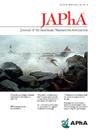重印本:以药剂师为主导的少数民族患者高血压管理。
IF 2.5
4区 医学
Q3 PHARMACOLOGY & PHARMACY
Journal of the American Pharmacists Association
Pub Date : 2024-07-01
DOI:10.1016/j.japh.2024.102183
引用次数: 0
摘要
背景:在美国,近一半的成年人患有高血压(HTN),而只有大约四分之一的成年人血压(BP)得到控制。高血压在非裔美国成年人中更为常见,少数族裔成年人的血压控制率较低。药剂师主导的高血压干预已被证明能有效改善血压控制并降低心血管事件风险:本研究旨在利用电子健康记录(EHR)数据,通过药剂师主导的干预措施改善血压控制:这是一项前瞻性队列研究,在北卡罗来纳州康科德市郊区的一家大型诊所 Atrium Health Concord Internal Medicine 进行。使用电子病历数据工具识别未受控制的高血压患者。年满 18 周岁、持续高血压未得到控制、少数种族或民族的患者均被纳入研究范围。主要结果是与对照组相比,干预组中血压达到 140/90 mm Hg 以下的患者比例。次要结果包括血压与基线相比的平均变化、就诊次数和类型、干预次数和类型:共有 110 名患者参加了这项研究,每组 55 人。两组患者的基线特征基本平衡。平均年龄为 62 岁,大多数患者为女性和非裔美国人。在主要结果方面,干预组中有 70.9% 的患者血压小于 140/90 mm Hg,而对照组中仅有 32.7% 的患者血压小于 140/90 mm Hg(P < 0.001)。最常见的干预措施是改变生活方式,其次是血压监测技术教育和坚持用药干预:在这项研究中,药剂师主导的干预措施在临床和统计学上显著改善了少数族裔人群中持续未控制的高血压。本文章由计算机程序翻译,如有差异,请以英文原文为准。
Reprint of: Pharmacist-led hypertension management in a minority patient population
Background
Nearly half of adults in America have hypertension (HTN), and only approximately 1 in 4 adults has their blood pressure (BP) under control. High BP is more common in African Americans adults, and BP control is lower among minority adults. Pharmacist-led interventions for HTN have been shown to be effective in improving BP control and reducing the risk of cardiovascular events.
Objective
This study aimed to leverage electronic health record (EHR) data to improve BP control through pharmacist-led interventions.
Methods
This was a prospective, cohort study conducted at Atrium Health Concord Internal Medicine, a large suburban practice in Concord, North Carolina. Patients with uncontrolled HTN were identified using an EHR data tool. Patients were included if they were at least 18 years of age, had sustained uncontrolled HTN, and were of a minority race or ethnicity. The primary outcome was proportion of patients achieving a BP of < 140/90 mm Hg in the intervention group compared with a control group. Secondary outcomes included mean change in BP from baseline, number and type of visits, and number and type of interventions.
Results
A total of 110 patients were enrolled in this study, 55 patients in each cohort. The baseline characteristics were generally well balanced between the 2 groups. The mean age was 62 years, and most patients were female and African American. For the primary outcome, 70.9% of the patients in the intervention group achieved a BP of < 140/90 mm Hg compared with 32.7% of the patients in the control group (P < 0.001). The most common intervention was lifestyle modifications, followed by BP monitoring technique education and medication adherence interventions.
Conclusion
In this study, pharmacist-led interventions resulted in clinically and statistically significant improvements in sustained uncontrolled HTN among minority populations.
求助全文
通过发布文献求助,成功后即可免费获取论文全文。
去求助
来源期刊
CiteScore
3.30
自引率
14.30%
发文量
336
审稿时长
46 days
期刊介绍:
The Journal of the American Pharmacists Association is the official peer-reviewed journal of the American Pharmacists Association (APhA), providing information on pharmaceutical care, drug therapy, diseases and other health issues, trends in pharmacy practice and therapeutics, informed opinion, and original research. JAPhA publishes original research, reviews, experiences, and opinion articles that link science to contemporary pharmacy practice to improve patient care.

 求助内容:
求助内容: 应助结果提醒方式:
应助结果提醒方式:


